
Fascia – Our body network
Fascial lines run through the expanse of the entire body in large sheaths that fan and branch out with the purpose of connecting every part of the body into one single unit. Fascia holds muscles, bones and organs in place and gives them their shape. Additionally, it conducts mechanical impulses throughout the body.
The individual components of the fascial network, which are collagen fibers, are electrically charged. When stretched or contracted, a small electrical potential is generated. The collagen fibers align along this line, re-attaching themselves to orient according to the electrical charge.
Over time, given lines have developed along this network. The collagen fibers attach themselves creating long lines that connect to other lines, and in this way distribute power across the entire body.
Between the relatively hard collagen fibers there are elastic building blocks (elastin). They connect the fibers of the fascia, and give them a slightly springy characteristic.
Dorsal Fascia
Every time you bend over, a line of pull is present and thus electrical potential is generated along the back of the body. Each step you take does the same, and the calf muscle is activated, generating energy that travels upwards.
The collagen fibers of the back body connect to the dorsal fascia. This connects the back body from the sole of the foot through the calves, the backs of the thighs, the sitz bones, the erector spinae, up the neck and all the way over the skull to the eyebrows.
Stretching with the help of the creeping effect
If you go into a forward bend, tension is created on the back line. Depending on whether your back is rounded or straight, your legs internally or externally rotated, or if your legs are open or closed, there will be a slightly different angle of pull.
If you hold a stretch for a while, the fascia will lengthen. This happens first by aligning the molecular fibers (collagen) of the fascia along the direction of the pull and the sliding along one another (creeping effect).
However, if you hold this stretch for too long, it will not lengthen the fascia further. The fascial line adapts to the tension and actually becomes tough (hardening effect).
If you want to optimally improve your flexibility, it makes sense to hold the stretch long enough to trigger the creeping effect. That is about 30 seconds. Before the fascia starts to harden, you ought to start moving again. By triggering the creeping effect multiple times, and for that matter at different angles, you are using the qualities of the fascia to optimize the outcome of stretching. This principle is the basis of what is known as 'repetitive stretching', which is said to be the most effective way to improve flexibility.
Power and energy with the rebound effect
The dorsal fascia have yet another unique quality that completely opposes that of lengthening. If there is a sudden pull on the fascia, the collagen fibers will withstand the pull as the elastic parts absorb the mechanical energy. They then spring back and release that energy. In this way, they work much like a spring (rebound effect).
Almost every living creature use this rebound effect to save energy as they move. This was an essential part of evolution because energy in the form of food, was scarce. It was necessary to use the resources optimally.
Kangaroo
If you observe the movement of a kangaroo, it does not execute each jump individually. The dorsal fascia picks up energy each time it lands and stores the kinetic energy as tension. Like a rubber ball, the tension springs back, giving momentum for the next jump. So the muscles are not fully responsible for the movement because the fascia picks up energy and releases it to support the muscular activity.
Fascial Balance
As is often the case, the right balance can promote health. Collagen fibers give the fascia their tensile strength, and the elastic fibers add the bounce.
If you lengthen the fascia through stretching, the collagen fibers move past one another (creeping effect). The elastic component decreases as a result. The springy qualities will be reduced.
You can compare this to a sheet of plastic that gradually becomes brittle and wilted from repeated bending back and forth. The fascia fatigues, the area of excessive pull becomes inflamed and this often occurs at an attachment point between tendons and bone.
The way to balance out stretching is by bouncing. As the elastic load increases, the elastic part of the fascia will increase to meet demand (elastin). This will help the fascia to maintain suppleness.
In Yoga
Precisely this imbalance is what is often found in a typical yoga practice. There is no class that goes by without a nice pull on the dorsal fascia (creeping effect). Forward bends are part of almost every yoga practice. But how often do you see exercises targeted in the elasticity of the fascia (rebound effect)? For the most part this fascial training is left out of the practice. Exercises that would be good to balance fascial lengthening would be those where the legs spring back elastically. A good example would be squat jacks.
It is therefore no surprise that inflammation at the sitz bones is so prevalent in enthusiastic yogis. The pain is at the attachment point of the hamstring to the sitz bone, otherwise knows as the ischial tuberosity. Pain is typical when sitting, and especially when bending forward during yoga. The pain can continue for hours after practicing. Over time, the fascial lines become more and more brittle leading to injury, even from a very small amount of pressure.
In order to prevent this and to balance out the dorsal fascia, it behooves any practitioner to train fascial elasticity as well. As soon as you start training elasticity, the proportion of elastin starts to increase along the line. The tension brings harmony to the inflamed area and the sitz bones can recover. Unfortunately, healing this type of injury takes anywhere from a few weeks to months to completely heal.
Exercise sequence
This series of exercises presents a way to balance out the fascia of the back line. One exercise targets the rebound effect through an explosive jumping exercise. This is used to improve the elasticity of the fascia. At the same time it warms up the fibers which will help the effect of creeping in the subsequent stretching.
Roll-ups - Rebound effect
Start in standing at the front of the yoga mat. Bend your legs and exhale to roll backwards (Fig 1).
Use the momentum of the rolling to come back upright and then to jump into the air. Draw your legs in as you float high (Fig 2).
Try to use momentum and the bounce of the fascia to execute this exercises efficiently. As you continue to practice, you will increase the speed. Continue until you are out of breath.
Effect: the dorsal fascia is charged with kinetic energy as you roll. The energy helps you with the spring back as you jump. The muscles only maintain the movement that the fascia have set into place.
Thread the needle - Creeping Effect
While you are still out of breath from the last exercise, sit with both knees bent and the feet on the ground. Place your right ankle just above your knee of the left thigh.
Pull your torso and legs together with your hands until you feel a nice stretch on the outside of the right hip. Slow your breath and enjoy for about five deep breaths (Fig 3).
Switch sides and hold for another five breaths before moving into a new round of roll-ups.
Effect: Five deep and calm breaths take about 30 seconds time, which is the optimal time to activate the creeping effect. The position of the legs directs the stretch into a deep layer at the back of the pelvis. Here is where there is often hardening of the fascial system.
Supine hip-opener - Creeping Effect
After the rebound exercise, continue with another round of stretching of the same myofascial features, but at a new angle. Repetition will make the stretching easier each time. Each time you go back to stretching, you can increase the intensity.
Lie flat on your back. Draw your left thigh into your chest and then bend your knee to 90 degrees. Hold onto the foot as you draw the thigh downward toward the floor. The lumbar spine should be pressed into the floor during this exercise. Again, enjoy the stretch for about five deep breaths (Fig. 4).
Switch sides and hold for five breaths before charging the dorsal fascia again with the third round of roll-up exercise.
Effect: This is again a similar stretch as the previous one. The principle is 'repetitive stretching' We stretch just long enough to activate the creeping effect and then we move on. If we stayed much longer, the fascia would not get longer. It would over time in fact become more stiff. So we generate heat and elasticity first before going back in to stretch.
Leg over the shoulder - Creeping Effect
The the third round of stretching we take it even further. For this one you will stay seated. Put your right thigh up and over your shoulder. Using your right or left hand, pull the foot behind the head. Again the magic number is five deep breaths to activate the creeping effect (Fig. 5).
Effect: The roll-ups charge the dorsal fascia with energy, and these three hip openers, which increase in intensity bring stretch to these myofascial features. The warmth generated in this movement loosens up the sulfur-hydrogen bridges that connect the collagen fibers in the fascia. This allows these fibers to align more easily and glide more smoothly during the creeping effect. It's an optimal combination.
Shavasana
This is certainly a challenging sequence. You are alternating the activation of two opposing qualities of our fascia. The constructive rest that follows this practice is a vital component of the sequence.
Lay down on the floor for constructive rest at the close of the practice. Your legs are relaxed and fall loosely to the ground. Your hands are at a comfortable distance from the body with the palms facing upwards(Fig. 6).
If for any reason this position is not comfortable, change your position to one where you can fully relax. Stay in this position until the last drop of sweat has evaporated from your body.
Effect: Our fascial network is far from passive. Connective tissue cells (myofibroblasts) infiltrate collagen fibers, which tighten up the fascial network. These myofibroblasts become active during periods of stress among other things. Post training relaxation helps these fibers to release which will in turn promote the overall flexibility in the body, not to mention the overall feeling of relaxation.
Enjoy practicing!
Many thanks to OGNX for the apparel (teacher and student).
Photographer: Paul Königer - yogafotograf.de
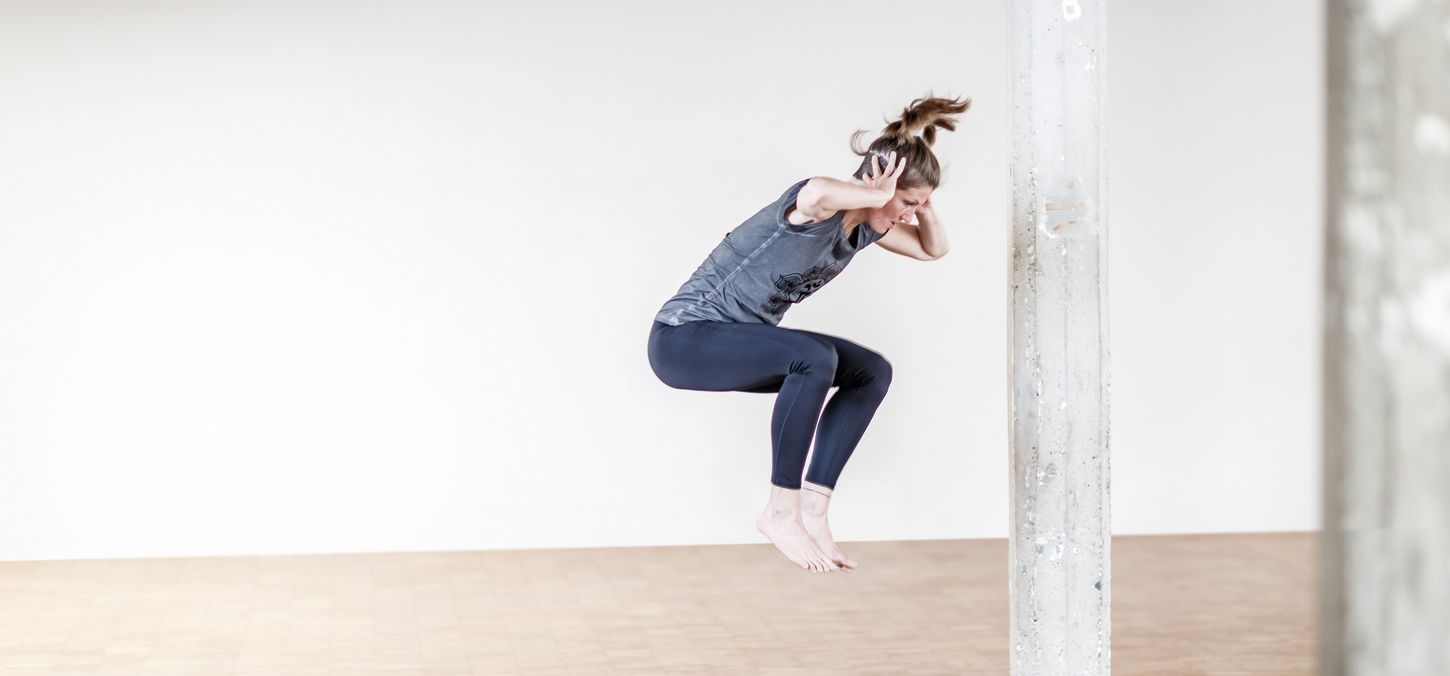

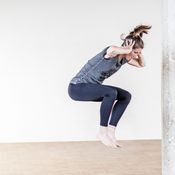
 Dr. Ronald Steiner
Dr. Ronald Steiner
 Kristen Sikorsky Racco
Kristen Sikorsky Racco
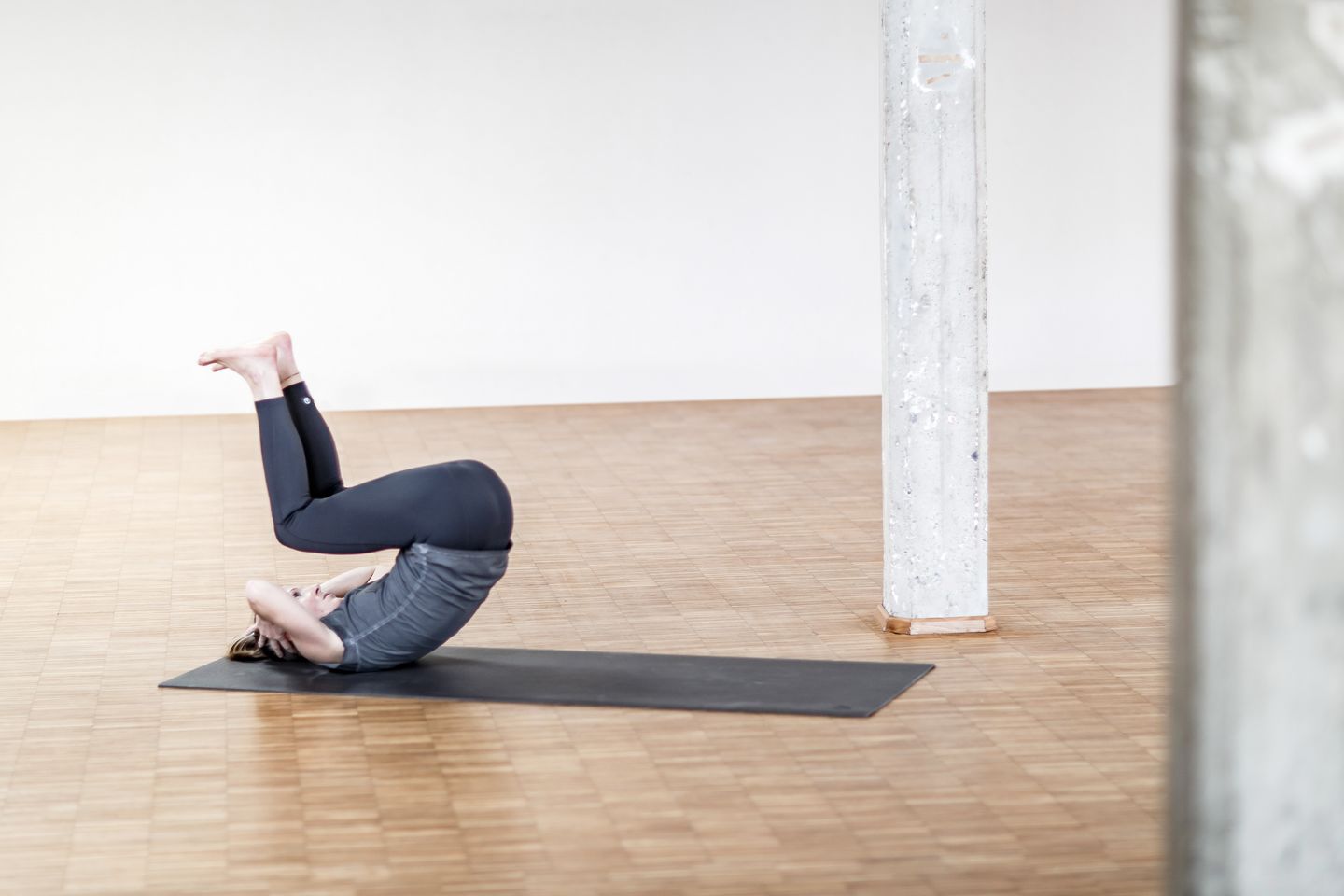
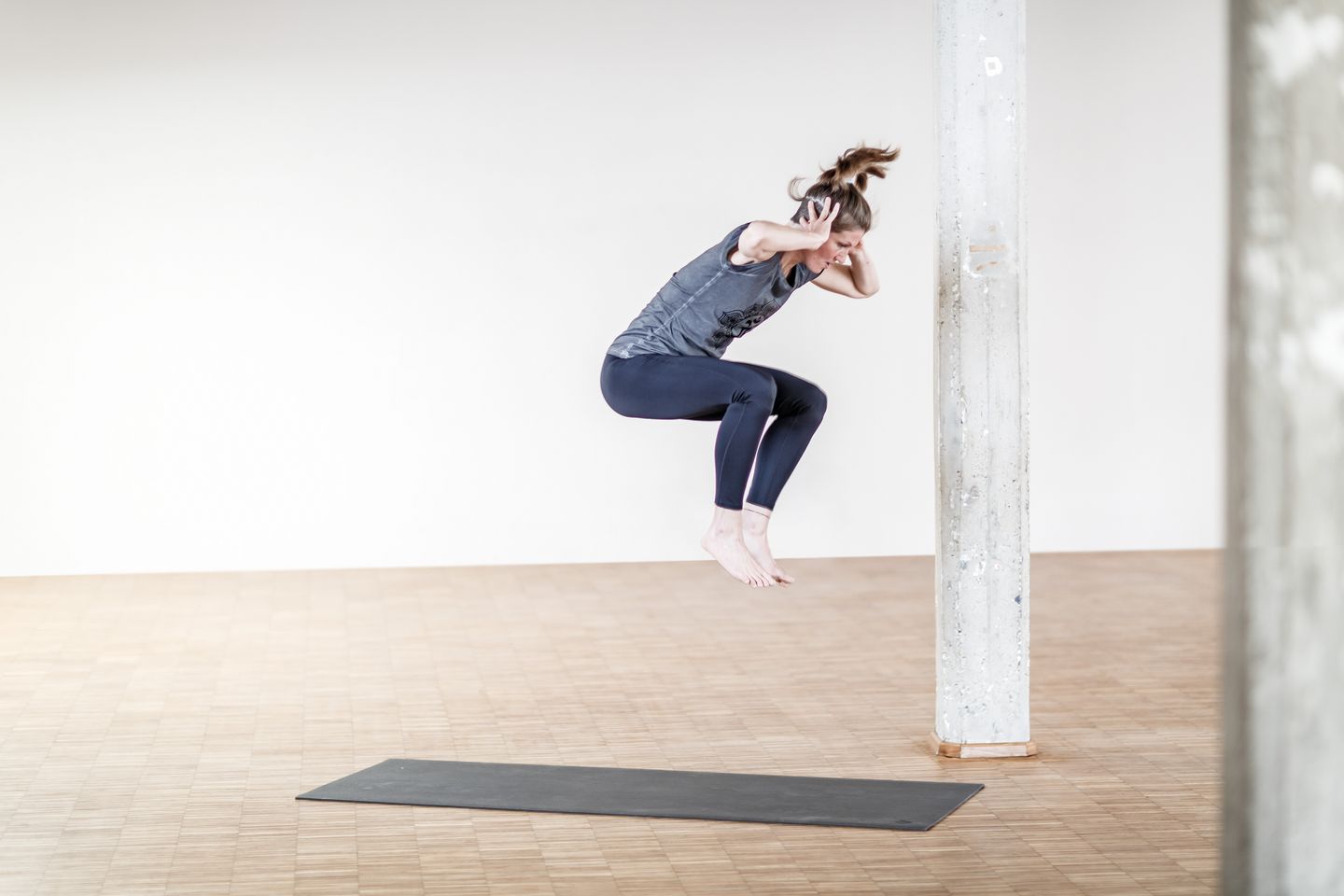
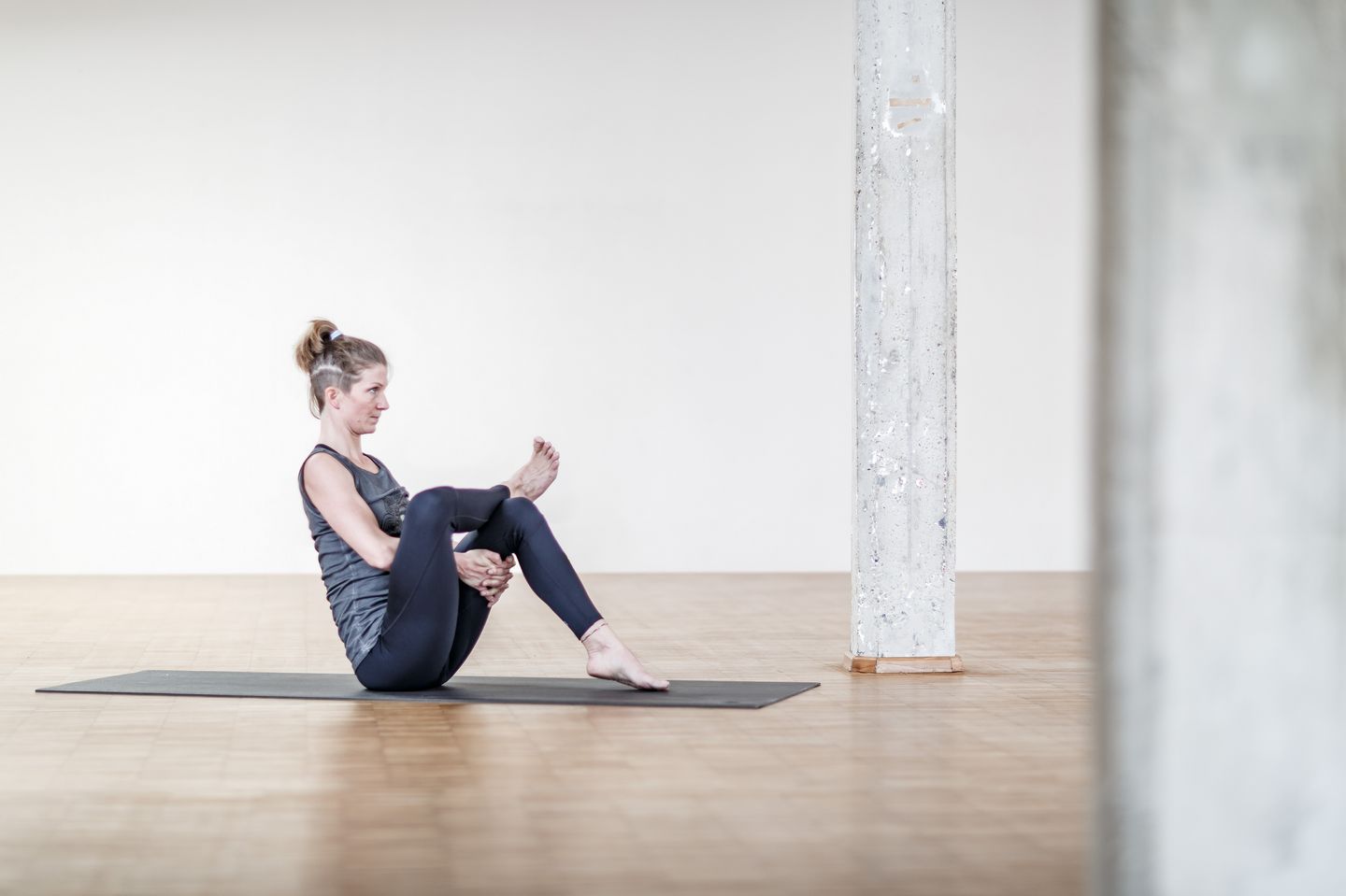
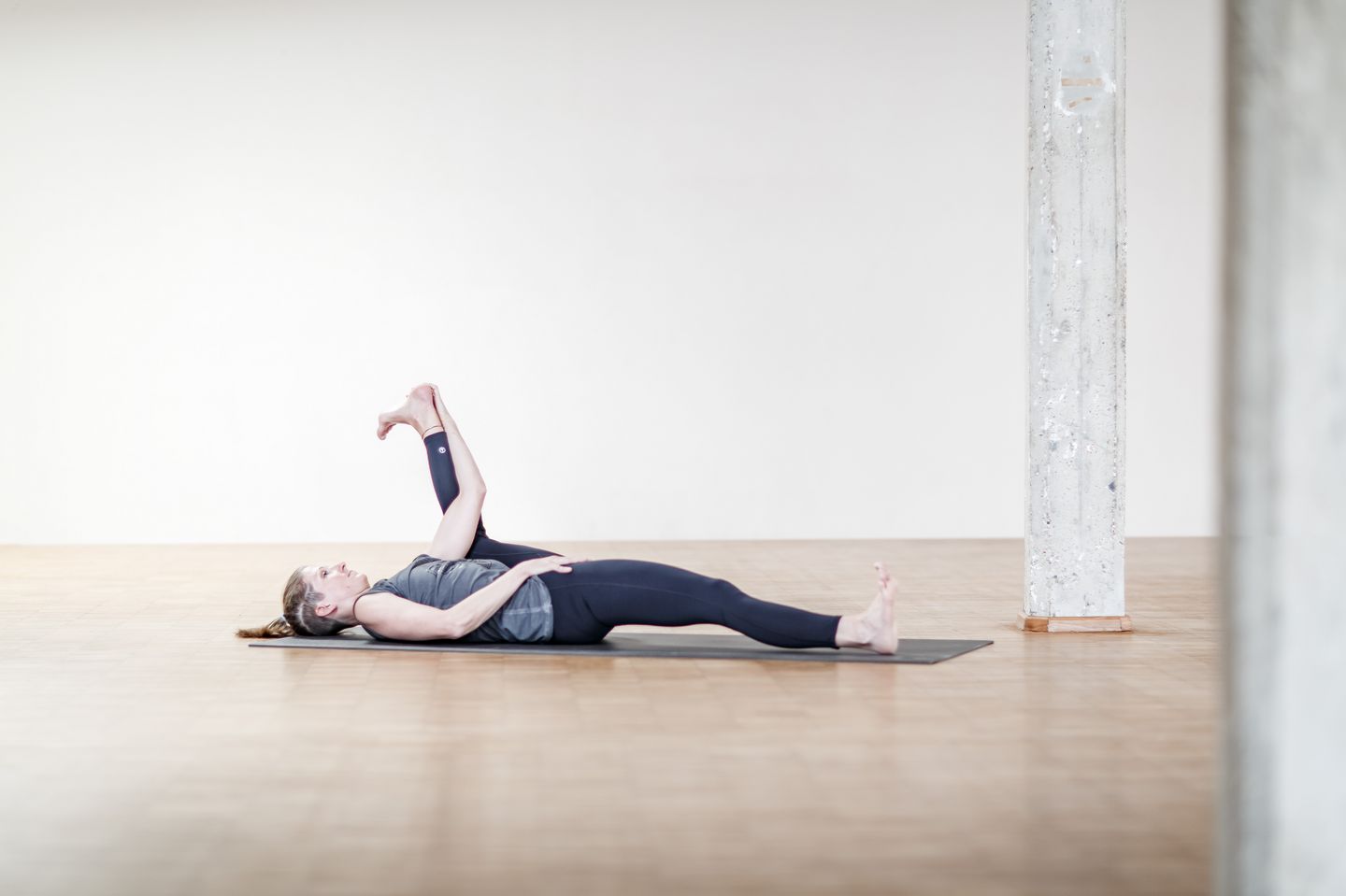
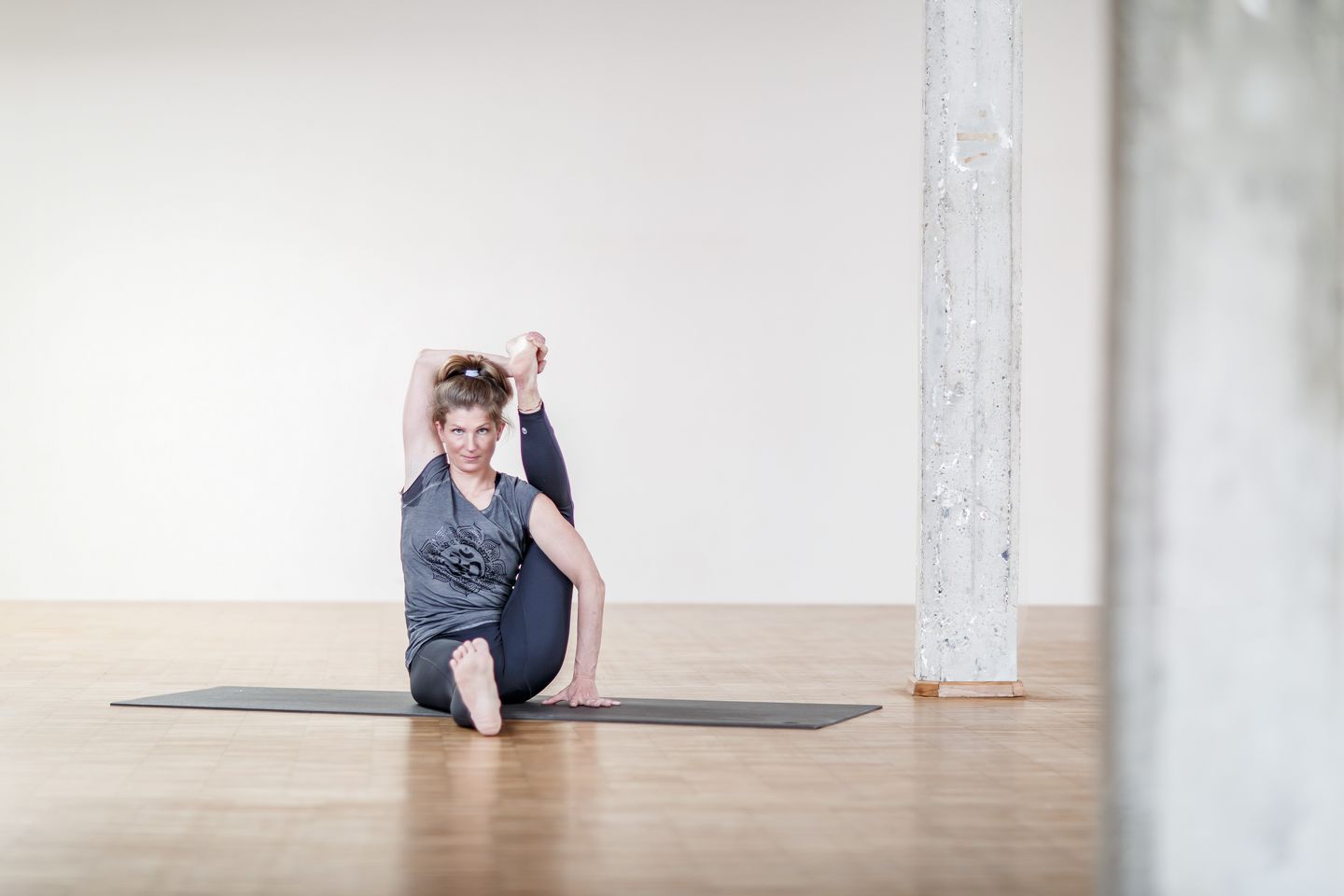
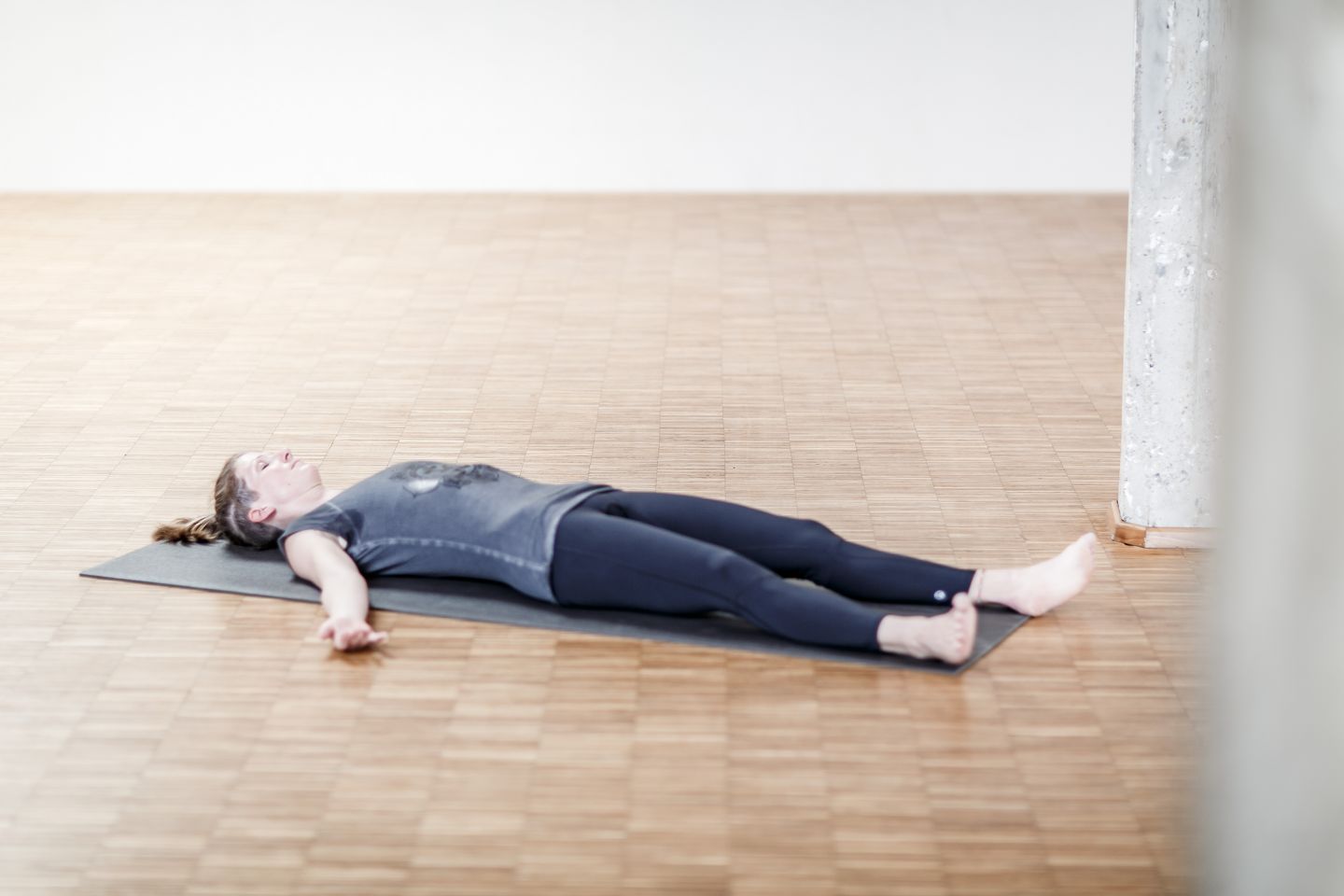

Messages and ratings